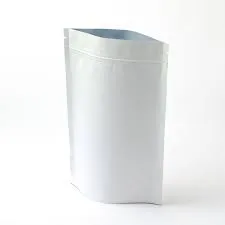- Afrikaans
- Albanian
- Amharic
- Arabic
- Armenian
- Azerbaijani
- Basque
- Belarusian
- Bengali
- Bosnian
- Bulgarian
- Catalan
- Cebuano
- chinese_simplified
- chinese_traditional
- Corsican
- Croatian
- Czech
- Danish
- Dutch
- English
- Esperanto
- Estonian
- Finnish
- French
- Frisian
- Galician
- Georgian
- German
- Greek
- Gujarati
- haitian_creole
- hausa
- hawaiian
- Hebrew
- Hindi
- Miao
- Hungarian
- Icelandic
- igbo
- Indonesian
- irish
- Italian
- Japanese
- Javanese
- Kannada
- kazakh
- Khmer
- Rwandese
- Korean
- Kurdish
- Kyrgyz
- Lao
- Latin
- Latvian
- Lithuanian
- Luxembourgish
- Macedonian
- Malgashi
- Malay
- Malayalam
- Maltese
- Maori
- Marathi
- Mongolian
- Myanmar
- Nepali
- Norwegian
- Norwegian
- Occitan
- Pashto
- Persian
- Polish
- Portuguese
- Punjabi
- Romanian
- Russian
- Samoan
- scottish-gaelic
- Serbian
- Sesotho
- Shona
- Sindhi
- Sinhala
- Slovak
- Slovenian
- Somali
- Spanish
- Sundanese
- Swahili
- Swedish
- Tagalog
- Tajik
- Tamil
- Tatar
- Telugu
- Thai
- Turkish
- Turkmen
- Ukrainian
- Urdu
- Uighur
- Uzbek
- Vietnamese
- Welsh
- Bantu
- Yiddish
- Yoruba
- Zulu
Creating a Paper Box Design Without the Use of Adhesives and Glue
Creating a No-Glue Paper Box A Sustainable Crafting Solution
In today’s environmentally conscious world, the need for sustainable crafting solutions is more crucial than ever. One innovative approach that has gained traction is the creation of paper boxes without the use of glue. This method not only enhances the creativity of the designer but also promotes eco-friendliness by reducing the number of materials used in box construction. In this article, we will explore the steps involved in creating these glue-free paper boxes while highlighting their numerous benefits.
The Appeal of No-Glue Paper Boxes
No-glue paper boxes are appealing for multiple reasons. First, they are easy to assemble, requiring only a few folds and cuts. This makes them a fantastic project for individuals of all ages, from children learning basic crafting skills to adults seeking a sophisticated decorating solution. Additionally, the absence of glue means that the boxes can be easily disassembled and recycled, making them an eco-friendly option.
Materials Needed
To construct a no-glue paper box, you will need the following materials
1. A sheet of paper or cardstock Choose a design or color that resonates with your project. Cardstock is sturdier and holds shape better, while regular paper allows for more intricate designs since it is easier to fold. 2. Scissors To cut the paper into the desired shape and size. 3. A ruler and a pencil For precise measurements and guidelines. 4. Bone folder (optional) To create crisp, professional-looking folds.
Step-by-Step Instructions
1. Prepare Your Design Decide the dimensions of your paper box. A simple square box could be created using a piece of paper that measures 12 inches by 12 inches. For a rectangular box, you’ll need to adjust the dimensions accordingly.
paper box no glue

2. Make the Initial Cuts and Folds Begin by marking guidelines with your ruler and pencil. For a square box, draw a square in the center of the paper and divide the remaining areas into flaps. The flaps should be about 2-3 inches wide on each side.
3. Cut the Corner Flaps Next, cut along the lines of the corner flaps but avoid cutting into the center square; this will act as the base. You should now have a cross shape when cut out.
4. Folding the Box Start folding along the creases. Fold up each flap around the base, overlapping them in a way that will hold the structure together without needing glue. The overlapping method creates a secure box that feels sturdy.
5. Finishing Touches You can add decorations such as ribbons, stamps, or drawings to personalize your box. Consider using a label maker for a professional touch.
Applications and Benefits
No-glue paper boxes are versatile. They can serve as gift boxes, storage solutions, or even as decorative items around the home. Their design is easily adaptable, allowing for various sizes and shapes according to need.
Moreover, crafting these boxes supports sustainability. By utilizing recycled paper or leftover materials, we can contribute to reducing waste. The absence of glue means that at the end of their lifespan, the boxes can be fully recycled without any contamination from adhesive substances.
Conclusion
Creating no-glue paper boxes is not only an enjoyable craft but also a valuable exercise in sustainability. It fosters creativity, allows for ease in assembly, and promotes environmentally responsible practices. Whether for a present, organizational storage, or simply a fun project, no-glue paper boxes provide a practical and eco-friendly solution that anyone can appreciate. So grab your materials and start crafting your own paper boxes today!













